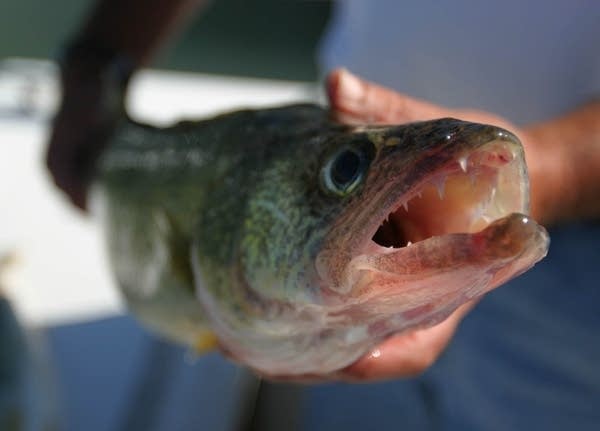Walleye quotas for Mille Lacs to be slashed
Go Deeper.
Create an account or log in to save stories.
Like this?
Thanks for liking this story! We have added it to a list of your favorite stories.

State and tribal officials have agreed to slash the maximum walleye harvest from one of Minnesota's most popular fisheries, Mille Lacs Lake, by half this year.
Fisheries officials on both sides last week agreed to cut the total quota to 250,000 pounds, down from 500,000 pounds last year, Sue Erickson, spokeswoman for the Great Lakes Indian Fish and Wildlife Commission, said Monday. The quota will be cut in half for both sport and tribal anglers, she said. Sport anglers will be allocated 178,750 pounds while Ojibwe bands with treaty rights will get 72,250 pounds.
Studies indicate the lake's walleye population has been declining, and a survey based on netting data last fall suggested that walleye numbers were at a 40-year low.
The lower quota will likely result in sport and tribal anglers having fewer walleyes from Mille Lacs to eat. Key details remain to be resolved, Anderson said. The bands will meet soon to decide how to allocate their share among themselves.
Turn Up Your Support
MPR News helps you turn down the noise and build shared understanding. Turn up your support for this public resource and keep trusted journalism accessible to all.
It wasn't immediately clear what steps the state might take to reduce the non-tribal harvest, though options could include reducing the number of walleyes that sport anglers are allowed to keep or tighter size restrictions. DNR fisheries officials were in a meeting and not immediately available for comment, a DNR spokesman said Monday.
While the fish were biting well last summer, a shortage of smaller walleyes meant anglers could keep relatively few to eat because of the rule that all walleyes between 17 and 28 inches must be released. In most years, the tribal and sport harvests have remained below their quotas.
Erickson noted that the bands and the state plan to conduct intensive tagging studies on the lake's walleyes and northern pike to get better population estimates. Another study should give them a better idea of whether predation on young walleyes by larger walleyes is having an impact, she said.
Erickson said this is the first time the tribes have agreed to cut their walleye allocation.
"Generally the allocation has trended upward, but in recognition that the fishery isn't doing what we had hoped it would, they're taking a reduction. And hopefully the further studies will help us get a better handle on the problem," she said.




